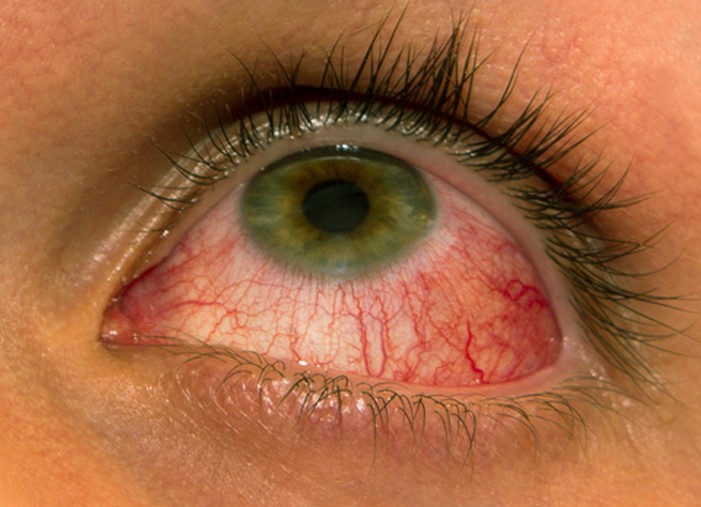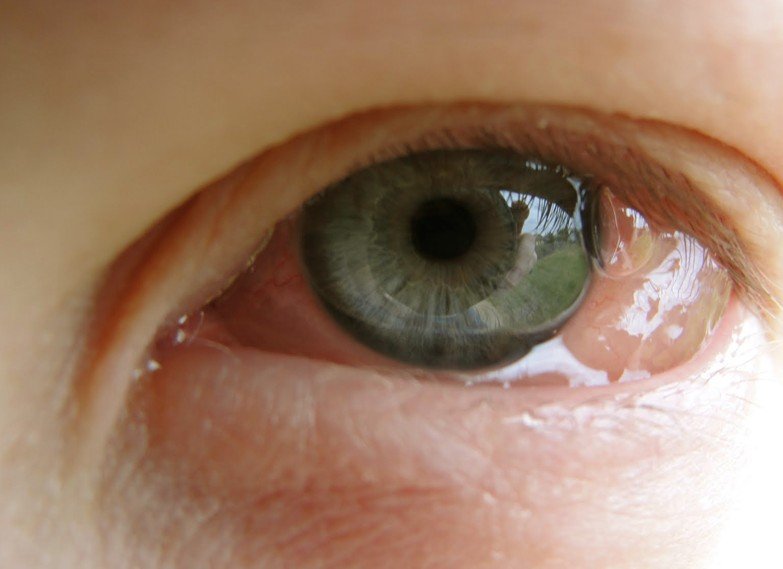Allergic Conjunctivitis
What is Allergic Conjunctivitis?
Allergic conjunctivitis is an immunologic response to an allergen, causing the conjunctiva and sometimes the cornea to become inflamed. The allergic reaction can occur after the person comes into contact with various allergenic substances, including pollen and mold spores. The eye will become easily red, itchy and watery, among other upsetting symptoms. The conjunctiva is the membrane inside the eyelid and it also covers the eyeball, having protective purposes. However, this is what also makes it so susceptible to irritation from various allergens, especially during the allergy seasons. This medical condition is quite often encountered, affecting a large percentage of the general population.
 There are two main types of allergic conjunctivitis, meaning seasonal and perennial. In the first case, the condition is triggered by common airborne antigens, meaning tree pollen in the spring, grass in the summer and weed pollen in the autumn. The persons who suffer from seasonal allergic conjunctivitis do not exhibit any symptoms during the winter, as the transmission of airborne allergens is reduced to a minimum. On the other hand, the persons who suffer from perennial allergic conjunctivitis present symptoms regardless of the season; this is because their allergies are not caused solely by these allergens. Dust mite, dust from cockroaches, pet dander and even cigarette smoke can trigger perennial allergic conjunctivitis.
There are two main types of allergic conjunctivitis, meaning seasonal and perennial. In the first case, the condition is triggered by common airborne antigens, meaning tree pollen in the spring, grass in the summer and weed pollen in the autumn. The persons who suffer from seasonal allergic conjunctivitis do not exhibit any symptoms during the winter, as the transmission of airborne allergens is reduced to a minimum. On the other hand, the persons who suffer from perennial allergic conjunctivitis present symptoms regardless of the season; this is because their allergies are not caused solely by these allergens. Dust mite, dust from cockroaches, pet dander and even cigarette smoke can trigger perennial allergic conjunctivitis.
Symptoms of Allergic Conjunctivitis
These are the most common symptoms of allergic conjunctivitis:
Classic symptoms:
- Injection of conjunctival vessels
- Conjunctival and eyelid edema
- Conjunctiva has a milky appearance
Vernal keratoconjunctivitis (two varieties – palpebral and limbal):
- Itchiness
- Increased sensitivity to light
- Sensation of having a foreign body in the eye
- Tearing
- Blepharospasm
- The cornea might be affected as well
- The eyelid skin is not involved
- Palpebral – presence of giant papillae that may cause drooping eyelids in severe cases
- Limbal – papillae appear at the junction between cornea and the conjunctiva (limbus)
Atopic keratoconjunctivitis:
- Perennial symptoms, aggravated during the winter
- Itchiness of the eyelids (bilateral)
- Watery discharge
- Redness
- Increased sensitivity to light
- Pain in the eye
- Eyelid margins can be infected by staphylococcus leading to blepharitis
- Chronic eye rubbing leads to keratoconus
Giant papillary conjunctivitis:
- Itchiness
- Large cobblestone papillae
- Mucoid or ropy discharge
- Sensation of having a foreign body in the eye (especially if that person wears contact lenses)
- Chronic bulbar conjunctival injection and inflammation
Possible Causes of Allergic Conjunctivitis
These are the most common causes of allergic conjunctivitis:
Common airborne allergens:
- Tree pollen – birch, alder, cedar, hazel, hornbeam, horse chestnut, willow, poplar, plane, linden, olive
- Grass – ryegrass, timothy
- Weed pollen – ragweed, plantain, nettles, mugwort, fat hen, sorrel
Other allergens/irritating substances:
- Dust mite
- Cockroach dust
- Cigarette smoke
- Pet dander and saliva
- Mold spores
- Chemical substances (cleaning products, household detergents, perfume, cosmetics, skin care products)
- Air pollution
- Eye drops
- Debris (giant papillary conjunctivitis)
Surgery (giant papillary conjunctivitis)
Treatment
These are the most common courses of treatment and home care remedies undertaken for the different types of allergic conjunctivitis:
Home care
- Closed windows during hay fever season (increased pollen in the air) to minimize the exposure to the said allergen
- Proper household cleaning (no dust)
- Using a purifier for the indoor air (eliminates airborne allergens inside your home)
- Avoiding the offending antigens (including those commonly found in cleaning products, dyes or perfumes)
- Avoiding rubbing the eye (prolonged and excessive rubbing leads to the formation of keratoconus)
- Applications of cold compresses on the affected eye can help to reduce the itchiness and inflammation
Medical treatment
- Anti-histamines – the doctor might either recommend systemic or topical preparations, depending on the severity of the allergy. Some antihistamines have the power to block the histamine release completely, while others only reduce the histamine release.
- Anti-inflammatory drugs – these can be either administered orally or as topical preparations (in the form of eye drops).
- Corticosteroids – these are recommended only for more severe cases, contributing to a direct reduction of the symptoms (inflammation, itchiness etc.)
- Artificial tears – these provide a barrier function and they act as the first line of defense for the conjunctiva. Moreover, if the conjunctiva comes into contact with a potential allergen, this increased film on the eye will wash it right away.
- Vasoconstrictors – commonly administered at the same time with anti-histamines, these drugs reduce the vessel injection and the associated redness.
- Mast cell stabilizers – these medications prevent the release of histamine as well, through a more complex mechanism.
- Immunotherapy – delivered through subcutaneous injections or sublingual (oral).
- For vernal conjunctivitis:
- Mucolytic agents
- Vasoconstrictors
- Mast cell stabilizers
- Pulsed-therapy steroid treatment
- Topical cyclosporine
- Surgery in severe cases
- For atopic keratoconjunctivitis:
- Mast cell stabilizers
- Topical corticosteroids
- Systemic antihistamines and corticosteroids
- Systemic cyclosporine
- Penetrating keratoplasty (severe corneal scarring or thinning)
- Giant papillary conjunctivitis:
- Change in the contact lens care routine
- Rigid gas-permeable contact lenses
- Mast cell stabilizers
- Topical corticosteroids and antihistamines
How long does allergic conjunctivitis last?
The bad news is that the symptoms of allergic conjunctivitis persist throughout the entire allergy season, their intensity being different from one patient to the other. The best thing that you can do is avoid getting into contact with the allergenic substance as much as you possibly can and, if that happens, to take the anti-allergy treatment. The symptoms experienced during the allergy seasons can be properly managed with the aid of specific medication.
Is allergic conjunctivitis contagious?
Allergic conjunctivitis is the inflammation of the eye conjunctiva and an actual response of the immune system, triggered by a potential allergen. There is no infectious agent causing the appearance of allergic conjunctivitis, so you can be absolutely certain that this is not a contagious condition. It is not transmitted through objects of personal hygiene or by touching the person who has an allergy. This is simply a response of the immune system, trying to get rid of the allergen.
Allergic Conjunctivitis Pictures
Here are some of the pictures of Allergic Conjunctivitis…



